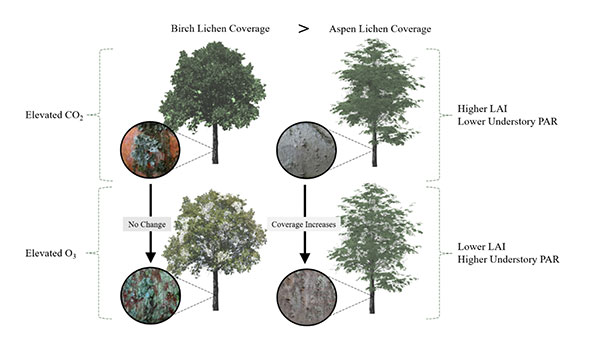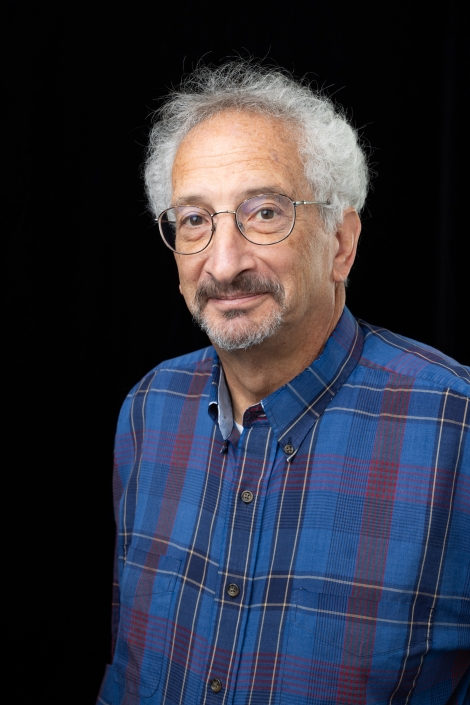Education:
- Ph.D., University of Georgia
- Postdoctoral, New Mexico State University and
- U.S. Environmental Protection Agency, Corvallis, Oregon
For more information, see My Webpage
Dr. Neufeld, and the science of fall colors are featured in this amazing interactive website: http://www.exploreasheville.com/science-behind-fall-color/
Research in my laboratory is focused on the physiological ecology of plants, with an emphasis on adaptations of plants to the understory, mechanisms allowing the success of invasive plants, ecophysiological implications of polyploidy in goldenrods and niche differentiation, and responses of Fraser fir Christmas trees to elevation and drought.
Students in my lab develop skills in a variety of plant ecophysiological techniques such as gas exchange and plant water relations, as well as gaining expertise in the basic aspects of experimental design and ecological research. Students in my lab utilize a combination of both laboratory and fieldwork, and observational and experimental methodologies. Some students go on for their Ph.Ds., while others obtain positions as community college instructors, technicians in research labs, Peace Corps volunteers, or environmental consultants.
If you are interested in pursuing research in this area, please contact me via email.

The figure above is from a recent publication. It shows that the growth of lichens on tree trunks after 10 years exposure to either elevated CO2 and/or O3 was highly dependent on how the host trees responded to these treatments. Increased tree growth in the elevated CO2 plots reduced incident light on the trunks, leading to less lichen growth on aspen, but not birch, trees. In the elevated O3 plots, reduced tree growth resulted in higher light levels, which stimulated lichen growth, but only on aspen trunks, not birch. This work was published in the journal Science of the Total Environment (Neufeld and Perkins, 2020).
We recently completed studies of polyploidy in goldenrods (Solidago altissima), canopy architecture of Fraser firs growing in Christmas tree farms, and autumn reddening in two urban red maple varieties. We have just started a new project on the ecophysiology of Southern Appalachian mosses and their responses to potential warming due to climate change. And finally, we are investigating winter ecophysiology of the evergreen Yucca filamentosa and ragwort (Packera aurea), which displays anthocyanins on the abaxial leaf surface of overwintering leaves.
Selected Publications:
Hiatt, Anna C., Alyssa A. Hove, Jennifer Rhode Ward, Liane Ventura, Howard S. Neufeld, Amy E. Boyd, H. David Clarke, Jonathan L. Horton and Zack E. Murrell. 2021. Authentic research in the classroom increases self-efficacy and appreciation for plants in undergraduate biology students. Integrative and Comparative Biology.
(https://doi-org.proxy006.nclive.org/10.1093/icb/icab089).
Hughes, Nicole M., Christian O. George, Corinne B. Gumpman and Howard S. Neufeld. 2022. Coevolution and photoprotection as complementary hypotheses for autumn leaf reddening: a nutrient-centered perspective. New Phytologist 233: 22-29. https://doi.org/10.1111/nph.17735
Lee, E. Henry, Christian P. Andersen, Peter A. Beedlow, David T. Tingey, Seiji Koike, Jean-Jacques Dubois, S. Douglas Kaylor, Kristopher Novak, R. Byron Rice, Howard S. Neufeld, and Jeffrey D. Herrick. 2022. Ozone exposure-response relationships parameterized for sixteen tree species with varying sensitivity in the United States. Atmospheric Environment 284: 119191. https://doi.org/10.1016/j.atmosenv.2022.119191
Neufeld, Howard S., Jennifer Johnson* and Robert Kohut. 2017. Comparative ozone responses of cutleaf coneflowers (Rudbeckia laciniata var. digitata, var. ampla) from Rocky Mountain and Great Smoky Mountains National Parks, USA. Science of the Total Environment 610:591-601.
Lefohn, Allen S., Christopher S. Malley, Luther Smith, Benjamin Wells, Milan Hazucha, Heather Simon, Vaishali Naik, Gina Mills, Martin G. Schultz, Elena Paoletti, Alessandra De Marco, Xiaobin Xu, Li Zhang, Tao Wang, Howard S. Neufeld, Robert C. Musselman, David Tarasick, Michael Brauer, Zhaozhong Feng, Haoye Tang, Kazuhiko Kobayashi, Pierre Sicard, Sverre Solberg and Giacomo Gerosa. 2018. Tropospheric ozone assessment report: Global ozone metrics for climate change, human health, and crop/ecosystem research. Elementa Science of the Anthropocene 6: 28. DOI: https//doi.org/10.1525/elementa279.
Mills, Gina, Håkan Pleijel, Christopher S. Malley, Baerbel Sinha, Owen Cooper, Martin Schultz, Howard S. Neufeld, David Simpson, Katrina Sharps, Zhaozhong Feng, Giacomo Gerosa, Harry Harmens, Kazuhiko Kobayashi, Pallavi Saxena, Elena Paoletti, Vinayak Sinha and Xiaobin Xu. 2018. Tropospheric Ozone Assessment Report: Present day tropospheric ozone distribution and trends relevant to vegetation. Elementa Science of the Anthropocene 6: 47. DOI: https//doi.org/10.1525/elementa302.
Chappelka, Arthur H. and Howard S. Neufeld. 2018. A link between physical and chemical climate change: the enhancement of vegetative water loss by atmospheric aerosols. New Phytologist 219: 9-11.
Neufeld, Howard S., Alyssa Sullins*, Barkley Sive and Allen S. Lefohn. (2019). Spatial and temporal patterns of ozone at Great Smoky Mountains National Park and implications for plant responses. Atmospheric Environment X 2: 100023 (14 pgs).
Neufeld, Howard S. and Fern S. Perkins*. 2020. Host tree species mediate corticolous lichen responses to elevated CO2 and O3 after 10 years exposure in the Aspen-FACE system. Science of the Total Environment (in press).

Title: Professor , Plant Ecophysiology
Department: Department of Biology
Email address: Email me
Phone: (828) 262-2683